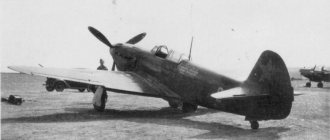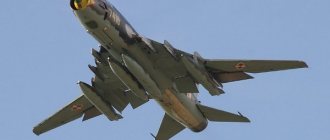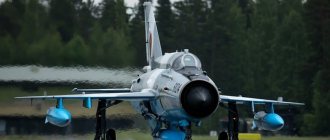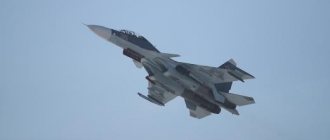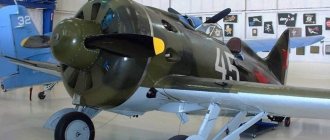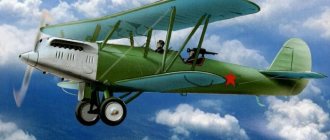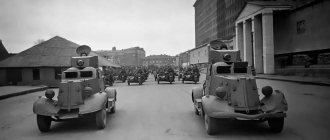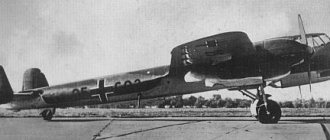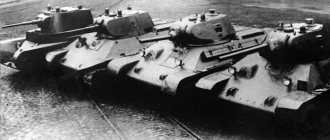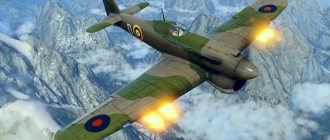I-185 is Polikarpov’s last fighter, an aircraft of complex fate and no less complex character. Opinions on its design were sharply divided. It is considered a super-weapon, while at the same time some experts believe that the I-185 fighter did not stand out from the ranks of the average world aviation of that period.
We will try to understand the issue based on the currently available data, although it is quite difficult. Witnesses to the events of those years are no longer alive, and we had to use only documents, moreover, without the “secret” stamp.
Development history
The end of the 1930s was marked by intense work at the Polikarpov Design Bureau on the modernization of a number of obsolete types of fighters and the development of new aircraft designed to replace the I-153 sesquiplanes and the still flying, but rapidly deteriorating I-16.
The work included projects for the I-180, a fighter with an air-cooled engine developed on the basis of the I-16, the next maneuverable sesquiplane I-190 was created, the I-16 type 29 fighter and the maneuverable fighter I-153 “Chaika” were brought to modern requirements.
In addition, active work was underway on the “Ivanov” theme - the development of a high-speed short-range bomber.
The experience and concept of the I-200 high-speed fighter, which later became the famous MiG-1 fighter, was developed.
N.N. Polikarpov believed that to create a fighter, a combination of:
- powerful and reliable engine;
- durable semi-monocoque fuselage;
- shifted center of gravity to achieve high maneuverability in any aircraft position;
- the wing had developed mechanization and a high specific load.
This concept can be clearly seen in all aircraft of this designer. Another thing is that the contemporary industry of the country of the Soviets could not always provide designers with the required resources.
As a result, the latest projects of the “King of Fighters” were aircraft of the late 1930s - the I-153, deservedly recognized as the best biplane fighter, and the I-16 type 29, the last production version of the fighter, equipped with a powerful M-63 engine, the armament of which was 12.7 mm UBS and a pair of 7.62 mm ShKAS.
Here it is worth noting our school of aircraft construction. Like the German one, almost all of our fighters were equipped with more accurate synchronized weapons. Unlike American or British aircraft, where the main focus was a hail of shells from wing batteries.
After the unsuccessful completion of the I-180 and I-190 projects, N.N. Polikarpov begins to develop the Project 62 aircraft, powered by the promising M-71 and M-90 engines, which were in development at that time.
But in 1940, Polikarpov visited Germany as part of the Soviet delegation; the formal purpose of the trip was to familiarize himself with its industrial capabilities and to purchase machines and equipment for industrial purposes.
Meanwhile, an event of great significance occurred in the USSR. During the transfer and structuring of the aircraft industrial complex, the Polikarpov Design Bureau, which at that time was left without a chief designer, was practically disbanded.
The developments on the I-200 were transferred to the newly formed Design Bureau of Mikoyan and Gurevich; to be fair, it is worth noting that they managed to complete the project and put it into serial production under the name MiG-3.
After returning from a business trip, Polikarpov had to restore the work of his design bureau, recruit new employees, moreover, after his arrival, all developed aviation production facilities were occupied, Design Bureau N.N. Polikarpov received production at the newly created aircraft plant No. 51.
Naturally, the plant at that time was not the best platform for creating new types of aircraft, nevertheless, work on the I-185 project continued.
For the project it was planned to use an M-90 air-cooled aircraft engine with 1600-1750 hp. on takeoff.
It is worth noting in advance that, despite the promising start and promises of the designers, an engine similar to the M-90 was developed for the first time, and already during its design, technological and practical problems began.
The industry at that time would not have been able to provide mass production of such a design. Admirers of Polikarpov’s genius constantly forget about this.
Considering that just at this time all the Union design bureaus were working on the design of combat aircraft, the country was preparing for war. N.N. Polikarpov is trying to get ahead of the game.
The I-185 with the M-90 engine that he designed was theoretically superior to all aircraft of that period, both in speed and climb rate.
The only problem was the performance of the engine. But there were big problems with her.
The first prototype left the factory's workshops in 1940; it was a traditional monoplane, with a spacious cabin, good visibility and good armament: two large-caliber and two rifle-caliber machine guns.
But the M-90 engine never came... After waiting for the engine, in May 1940, People's Commissar of the Aviation Industry Shakhurin gave the order to install the M-71 engine on the I-185, which had more power than the M-90, but also greater weight.
However, this engine also turned out to be unavailable and did not even pass bench tests. As a result, at the end of 1940, the M-81, designed by Shvetsov, was finally installed on the I-185; it had more power than the serial M-63. It should be noted that this engine at that time was not brought to production, and had many “childhood diseases”.
The plane took off with this engine and showed relatively good results:
- the speed at 5000 meters reached 590 km/h (estimated 610);
- ground speed 495 km/h (estimated 500).
But the engine vibrated significantly, moreover, they decided not to bring it to condition and switch all the power to other engines. The M-81 was removed from the plane and the M-71 that had just arrived was installed, but the engine was “raw” and did not correspond to the passport data - it was heavier and weaker than planned.
Here is the solution to the I-185 epic; there was no engine for the plane.
On M-82 N.N. Polikarpov did not pay attention at that time; at that time he was interested in high-power engines.
On May 5, 1941, Polikarpov received a technical assignment to install the M-82A engine designed by Shvetsov in his fighter. During the development of the I-185 prototype, it was planned to arm 3x20 mm synchronized ShVAK, 2x7.62 mm ShKAS and a pair of wing cannons; fortunately, machine guns and wing cannons were abandoned during the design process.
It was at that time that the country experienced a shortage of aviation weapons. It got to the point that in order to arm the newly created Yak-1 and MiG-3, it was necessary to remove the UB aircraft machine guns located in the underwing gondolas of parts of the MiG-3 fighters.
In the summer of 1941, after the outbreak of war, Plant No. 51 was evacuated to Novosibirsk, where Polikarpov continued work on the project.
It was decided to test aircraft with M-82A and M-71 engines. Prototypes of the aircraft were built, after which a military series was built, which was tested as part of the 728 IAP of the Karelian Front.
Where the plane earned excellent reviews from pilots. But, nevertheless, in terms of its performance characteristics, the I-185 with the serial M-82 engine was slightly superior to the La-5. But at the same time it required significantly more metal and labor-intensive work.
For this reason, as well as due to the reluctance of aircraft factories to repurpose at that moment, which were working at the limit of their capabilities, the I-185 was withdrawn from production and design.
The I-185, with a powerful and reliable engine and qualified workers and resources, could become a lifesaver for the Soviet Air Force. After all, as we know, throughout the war, domestic aircraft designers only caught up with German aircraft in terms of characteristics.
I-185 could be that step forward. But, alas, the imperfection of the material and technical base and the wrong choice of engine at the beginning of the design played a role in the fate of an excellent front-line fighter.
ANOTHER ATTEMPT
Even before the start of testing the four “one hundred and eighty-fifths” at the front, in November 1942, the All-Russian Research Institute of the Air Force received the I-185M-71, which is the standard for mass production. State tests were carried out until December 26, test pilot P.M. Stefanovsky flew. Although the engine did not work completely reliably (two M-71s were replaced during testing), very good results were obtained in terms of the aircraft's flight speed, which is still the main measure of the merits of new machines. At the ground, the maximum speed was 560 km/h (600 km/h in afterburner), at an altitude of 6 km - 680 km/h. It was noted that in some flights Stefanovsky exceeded the flight speed of 700 km/h.
State tests of the standard for the series were completed in January 1943. Considering the truly outstanding data of the aircraft, a number of appeals were made to higher authorities for the speedy launch of the I-185 into production.
In particular, pilots Stefanovsky, Loginov and leading engineer Lazarev personally addressed I.V. Stalin:
“Central Committee of the All-Union Communist Party (Bolsheviks) comrade. Stalin I.V.
Dear Joseph Vissarionovich!
We, testers of the I-185 fighter designed by N. N. Polikarpov, are forced to turn to you, Joseph Vissarionovich, with the following:
1. The I-185 fighter passed factory and then state flight tests at the Air Force Research Institute. Factory tests were carried out by pilot Comrade. Loginov, and at the Air Force Research Institute of Spacecraft - pilot Comrade. Stefanovsky.
As a result of the tests, the following data were obtained:
A) Maximum ground speed = 600 km/h
B) at an altitude of 6100 m = 680 km/h
B) Rate of climb to 5000 m = 4.7 min.
D) Average time to perform a turn at H = 1000m = 22-23 sec.
D) The fighter has powerful frontal fire - installed: 3 20 mm caliber guns with a combat reserve of 600 shells.
E) The aircraft can be operated by pilots of average qualification, which is confirmed by the pilots who flew it (12 people, including 4 private pilots of the Guards Regiment).
The aircraft is the easiest to learn for most pilots in our country.
G) The fighter is simple to operate. Its units are easily accessible for repair in the field.
2. We know that Comrade. Polikarpov has a project for modifying the I-185 fighter, the implementation of which will provide the following flight data:
A.) Maximum ground speed 650 km/h
B.) at an altitude of H=6250 m 710 km/h
B.) Climb 5000 m 4.2 min.
D.) The power of frontal fire can be increased to 4 guns of 20 mm caliber.
According to its flight-tactical characteristics, the I-185 aircraft is one of the best at the present time, therefore we are asking you for permission to build a military series and test the aircraft in combat conditions at the front.
Test pilot of the Air Force Research Institute Colonel Stefanovsky
Leading engineer of the Air Force Research Institute of Spacecraft, engineer-colonel Lazarev
Test pilot of plant No. 51 NKAP Loginov."
On February 4, 1943, N.N. addressed Stalin. Polikarpov. He concluded his message with the words:
“I-185 M-71 is waiting for your decision to launch into mass production.”
It is difficult to say whether these appeals to the “leader of the world proletariat” contributed, however, in February-March 1943, on the instructions of the People’s Commissariat of the Aviation Industry, work began on preparing serial production of the I-185 at Moscow aircraft plant No. 81. A “model” aircraft was sent there for repair and study (during additional tests it received minor damage).
Work progressed slowly, and in April it stopped altogether. On April 5, 1943, the experimental I-185 M-71 crashed due to engine failure. Test pilot V.A. Stepanchonok died.
By decision of the authority, work on introducing the aircraft into series was stopped. After repairs, the “exemplary” I-185 was returned to plant No. 51 in flying condition.
Date of publication on the website: 04/12/2004
2
Design
The I-185 was a cantilever monoplane, of mixed design, with a low wing. The engine is located in front of the fuselage and was enclosed in a streamlined casing.
The aircraft was distinguished by well-developed wing mechanization, good aerodynamic shapes, a large, free cabin and a fairly voluminous behind-the-cockpit compartment.
The only synchronous armament consisted of three ShVAK aircraft cannons.
The fuselage of the aircraft, as a legacy from the I-16, was a semi-monocoque laminated from birch veneer, with an engine mount made of steel pipes. Additionally, the rigidity was enhanced by 4 spars, frames and stringers.
The wing was a two-spar, caisson type, consisting of a center section and detachable consoles. The wing material was aluminum, which also played a role. Let me remind you that at that time even the mass-produced La-5s flew with wooden wing spars; there was not enough metal.
Mechanization included ailerons, automatic slats and Schrenk landing flaps, also used as flaps. The landing gear is three-post, completely retractable in flight.
Hydraulic shock absorption. Tail support with hydraulic drive. Retracting the landing gear, as well as starting the engine, was carried out using the aircraft's pneumatic system.
Engine. The aircraft was tested with two types of engines - the M-71 Nazarov and the M-82A designed by Shvetsov, but if the first engine itself was at the testing stage, moreover, as a result of work on it was stopped due to futility, the second one is successfully serving to the present day .
The M-82 was a twin M-62 engine developed from the M-25, a licensed Wright R-1820-F3 Cyclone.
At that time the USSR did not have its own developed school of engine building.
This was another drop on the scales of fate. It was the lack of a powerful and reliable engine in the USSR that caused the I-185 aircraft not to take off. Should Yakovlev or Polikarpov be blamed for this?
Perhaps yes, Yakovlev’s fault is that at the right time he did not provide Polikarpov with production capacity for the small-scale production of at least the I-185, which could fly with the M-82, Polikarpov’s fault is that he initially worked with unpromising engines.
Is this the fault of the designer who hoped, or the creators of the motor who misled him? Now no one can clarify.
The aircraft's fuel system consisted of three main tanks located in the wing center section. The tanks were designed and could also be equipped with a fire protection system.
Takeoff run
| Airplane | Year of issue | Run, m |
| I-16 type 5 | 1934 | 220 |
| I-15 (TsKB-3) | 1933 | 70 |
| I-16 type 10 | 1937 | 260 |
| I-15bis (I-152) | 1937 | 170 |
| I-16 type 24 | 1939 | 260 |
| I-153 | 1939 | |
| I-17bis | 1936 | |
| I-170 (project) | 1939 | |
| I-180-3 | 1940 | |
| I-190 | 1940 | |
| I-185 (01) | 1940 | 280* |
| I-195 (project) | 1940 |
Armament and performance characteristics
Initially, it was planned to install 12.7 mm UBS machine guns, Berezin designs, and two ShKAS rifle caliber guns. But due to the fact that 7.62 mm machine gun bullets could not cause significant damage to an all-metal aircraft, they began to be removed from service, replacing them with large-caliber machine guns or air cannons.
The I-185 in its final version was armed with three 20 mm ShVAK aircraft cannons.
At that time, the main armament of USSR fighters. In addition, bomb racks of the Der-25 type could be installed under the wings of the I-185 for hanging various types of aircraft bombs with a caliber of up to 250 kg.
Missile weapons were also provided, in the form of ROFS-82 guides for launching unguided rockets of 82 mm caliber.
Mileage
| Airplane | Year of issue | Mileage, m |
| I-16 type 5 | 1934 | 200 |
| I-15 (TsKB-3) | 1933 | 70 |
| I-16 type 10 | 1937 | 290 |
| I-15bis (I-152) | 1937 | 230 |
| I-16 type 24 | 1939 | 300 |
| I-153 | 1939 | |
| I-17bis | 1936 | |
| I-170 (project) | 1939 | |
| I-180-3 | 1940 | |
| I-190 | 1940 | |
| I-185 (01) | 1940 | 350 |
| I-195 (project) | 1940 |
Performance characteristics in comparison with analogues
| Characteristics | I-185 | FW-190 | Supermarine Spitfire Mk IXE | P-51 Mustang |
| Specifications | ||||
| Crew, pilot | 1 | 1 | 1 | 1 |
| Length, m | 8,05 | 9 | 9,5 | 9,8 |
| Wingspan, m | 9,8 | 10,5 | 11,2 | 11,3 |
| Wing area, m2 | 15,53 | 18,3 | 22,5 | 21,8 |
| Weight, kg | 3130 | 3200 | 2300 | 3460 |
| Normal take-off weight, kg | 3735 | 4417 | 3350 | 4580 |
| Maximum take-off weight, kg | 3825 | 4900 | — | 5500 |
| Volume of fuel tanks, l | 650 | — | — | 1000 |
| Power point | Engine M-71 | BMW 801D-2 | Rolls-Royce Merlin 66 | Packard V-1650-7 V-shaped 12-cylinder with liquid cooling system |
| Engine power, hp | 2000 | 1470 (up to 2000 with afterburner) | 1720 | 1450 |
| Flight characteristics | ||||
| Maximum air speed, km/h | 680 | 685 | 650 | 640 |
| Practical range, km | 835 | 800 | 700 | Up to 1500 |
| Maximum altitude, km | 10 | 11,4 | 13 | 12,7 |
| Rate of climb, m/s | 20 | 13 | 24 | 17,5 |
| Climb time | 5 km in 4.5 minutes 5 km in 4.5 minutes | 5 km in 6.8 minutes | 5 km in 4 minutes | 5 km in 5 minutes |
| Armament | ||||
| Small arms and cannon | 3 ShVAK cannons 20 mm each. | 4x20 mm MG151/20 guns | 2x20 mm and 2x12.7 mm | 6 Browning M2 machine guns, 12.7 mm each. |
| Number of cartridges for main weapons | 560 | 780 | 740 | 1880 |
| Bomb load, kg | 500 | 500 | — | 900 |
| Rockets | 8 RS-82 | — | — | First option: 6 M8, in tubular guides. Second option: 10 HVAR 127 mm each |
Note: In the I-185 and P-51 Mustang aircraft, when choosing a combat load, you need to choose whether to install bombs or missiles, but installing both types of weapons is impossible.
The P-51 Mustang fighter has the ability to install two additional 284-liter external fuel tanks, in which case the number of HVAR missiles will be reduced from 10 to 6 units.
Weight
| Airplane | Year of issue | Weight | |
| Empty weight, kg | Takeoff weight, kg | ||
| I-16 type 5 | 1934 | 1118 | 1508 |
| I-15 (TsKB-3) | 1933 | 965 | 1374 |
| I-16 type 10 | 1937 | 1372 | 1726 |
| I-15bis (I-152) | 1937 | 1310 | 1650 |
| I-16 type 24 | 1939 | 1383 | 1882 |
| I-153 | 1939 | 1980 | |
| I-17bis | 1936 | 1533 | 2020 |
| I-170 (project) | 1939 | ||
| I-180-3 | 1940 | 2409 | |
| I-190 | 1940 | 1761 | 2212 |
| I-185 (01) | 1940 | 2068 | 2708 |
| I-195 (project) | 1940 | 2223 | 2916 |
Combat use
The I-185 military series took part in hostilities at the end of 1942 and the beginning of 1943. During military tests, flying over the front line was prohibited. The planes flew as part of the 728th Fighter Aviation Regiment of the Kalinin Front.
In fact, the planes were flown in hothouse conditions; there are no documents about military clashes with their participation.
There are a number of unconfirmed reports of participation in battles with enemy fighters and reconnaissance aircraft.
According to reviews from test pilots and line pilots of the regiment who took part in the tests, the aircraft performed well. Showed good handling and excellent flight characteristics.
The ergonomics of the controls and the comfort of the cockpit were noted. According to reviews from the regiment's technical staff, aircraft maintenance was affordable and convenient.
Far
| Airplane | Year of issue | Flight range, km |
| I-16 type 5 | 1934 | 540 |
| I-15 (TsKB-3) | 1933 | 500 |
| I-16 type 10 | 1937 | 525 |
| I-15bis (I-152) | 1937 | 530 |
| I-16 type 24 | 1939 | 669 |
| I-153 | 1939 | 510 |
| I-17bis | 1936 | 800 |
| I-170 (project) | 1939 | |
| I-180-3 | 1940 | 900 |
| I-190 | 1940 | |
| I-185 (01) | 1940 | 800 |
| I-195 (project) | 1940 |
The question of adoption
Despite excellent reviews from military tests and the resulting technical characteristics of the aircraft. The I-185 was not accepted for service.
This was reflected in the complexity of its production; gluing onto a fuselage blank is a process quite complex to perform; in addition, there is a significant use of metal in the design.
In addition, La-5 aircraft with the M-82 engine have already been delivered. Their production required the use of duralumin to a minimum; at the same time, most Air Force pilots mastered them, since the controls were slightly different from the earlier LaGG-3. In addition, the production of the I-185 required a vacant aircraft plant.
At that time, only the plant in Tbilisi was available, but it did not have a sufficient technical base to produce aircraft of the I-185 type.
Suffice it to say that for a long time they could not even organize the production of the wooden La-5. What can we say about the more complex I-185. It is also worth considering that the M-71 was never brought to production. And the M-82 on the La-5 showed comparative characteristics.
After abandoning the production of I-185 N.N. Polikarpov began developing a high-altitude fighter-interceptor at his base, but unfortunately, years and illness took their toll and on June 30, 1944, the great designer died. Unfinished projects were transferred to the archive, and his design bureau was transferred to Chelomey, and later worked on jet engines and cruise missiles.
Ceiling
| Airplane | Year of issue | Ceiling, m |
| I-16 type 5 | 1934 | 9100 |
| I-15 (TsKB-3) | 1933 | 9800 |
| I-16 type 10 | 1937 | 8470 |
| I-15bis (I-152) | 1937 | 9000 |
| I-16 type 24 | 1939 | 9700 |
| I-153 | 1939 | 10600 |
| I-17bis | 1936 | 9700 |
| I-170 (project) | 1939 | |
| I-180-3 | 1940 | 11000 |
| I-190 | 1940 | 12400 |
| I-185 (01) | 1940 | 10250 |
| I-195 (project) | 1940 | 12000 |
Links[edit]
Notes[edit]
- ↑
Gordon and Dexter, pp. 94–95. - Gunston, page 308
- Gordon and Dexter, page 95
- ↑
Gordon and Dexter, pp. 95–96. - ↑
Gordon and Dexter, pp. 96, 100 - Gordon and Dexter, page 100
- Gordon, page 275
- Gordon, pp. 275-76
- Gordon and Dexter, page 101
- Gordon, page 277
- Gladniker, David. "An Incomplete Guide to Using an Airfoil". m-selig.ae.illinois.edu
. Retrieved April 16, 2022.
